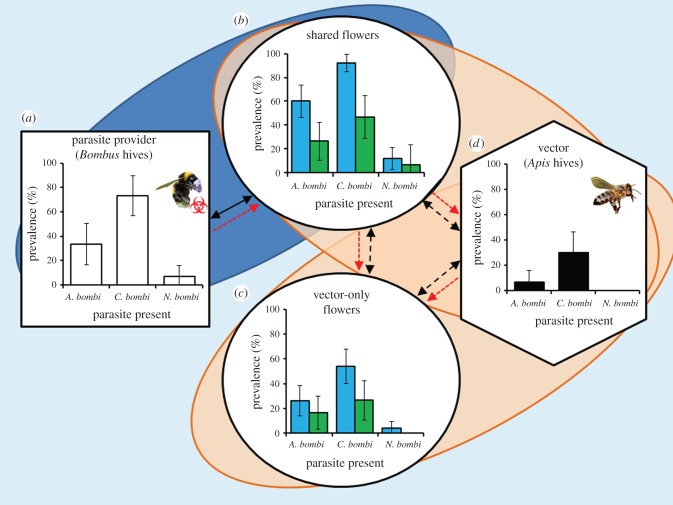Figure 3.
Honeybees vector bumblebee parasites. The prevalence of the bumblebee parasites A. bombi, C. bombi and N. bombi within the bumblebee colonies acting as the parasite providers (a), or after the experiment on bell-shaped C. cochleariifolia and flat-formed V. tricolor flowers (b,c, blue (left) and green (right) columns, respectively), or within honeybee colonies that acted as vectors (d). All flowers and bumblebees were free of the three parasites prior to the experiment. One set of flowers (b) was initially exposed to bumblebees for 3 h, while the honeybees were excluded from the foraging arena. The bumblebees were then excluded from the arena, and the honeybees allowed to forage freely on the same set of shared flowers, and also on a new set of clean, vector-only flowers (c). Solid black arrows represent movement of the parasite provider, dashed black arrows represent movements of vector species between flowers and hive, and red arrows indicate possible dispersal routes of the parasites. Error bars represent 95% CIs. (Online version in colour.)

